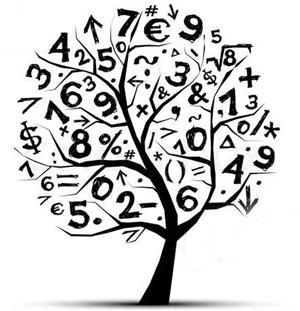Focusing Class 12th
Specially designed study material for Class 12 as per CBSE guidelines
Unlimited DOUBT Solving Classes for FREE!
Complete Conceptual Understanding
Advanced study material for competitive exams(IIT-JEE/NEET)
Test Series for Practice

Mathematics includes the study of such topics as numbers (arithmetic and number theory), formulas and related structures (algebra), shapes and spaces in which they are contained (geometry), and quantities and their changes (calculus and analysis). Mathematics is widely used in science for modeling phenomena. This enables the extraction of quantitative predictions from experimental laws. For example, the movement of planets can be predicted with high accuracy using Newton's law of gravitation combined with mathematical computation.
Types of relations: reflexive, symmetric, transitive and equivalence relations. One to one and onto functions.
Definition, range, domain, principal value branch.
Concept, notation, order, equality, types of matrices, zero and identity matrix, transpose of a matrix, symmetric and skew symmetric matrices. Operation on matrices: Addition and multiplication and multiplication with a scalar. Simple properties of addition, multiplication and scalar multiplication. Noncommutativity of multiplication of matrices, Invertible matrices; (Here all matrices will have real entries).
Determinant of a square matrix (up to 3 x 3 matrices), minors, co-factors and applications of determinants in finding the area of a triangle. Adjoint and inverse of a square matrix. Solving system of linear equations in two or three variables (having unique solution) using inverse of a matrix.
Continuity and differentiability, derivative of composite functions, chain rule, derivative of inverse
trigonometric functions, derivative of implicit functions. Concept of exponential and logarithmic functions.
Derivatives of logarithmic and exponential functions. Logarithmic differentiation, derivative of functions
expressed in parametric forms. Second order derivatives.
Applications of derivatives: increasing/decreasing functions, tangents and normals, maxima and minima (first derivative test motivated geometrically and second derivative test given as a provable tool). Simple problems (that illustrate basic principles and understanding of the subject as well as reallife situations).
Introduction, related terminology such as constraints, objective function, optimization, different types of linear programming (L.P.) problems. Graphical method of solution for problems in two variables, feasible and infeasible regions (bounded), feasible and infeasible solutions, optimal feasible solutions (up to three non-trivial constraints).
Integration as inverse process of differentiation. Integration of a variety of functions by substitution, by partial fractions and by parts, Evaluation of simple integrals, Fundamental Theorem of Calculus (without proof).Basic properties of definite integrals and evaluation of definite integrals.
Applications in finding the area under simple curves, especially lines, parabolas; area of circles /ellipses (in standard form only) (the region should be clearly identifiable).
Definition, order and degree, general and particular solutions of a differential equation. Solution of differential equations by method of separation of variables, solutions of homogeneous differential equations of first order and first degree.
Vectors and scalars, magnitude and direction of a vector. Direction cosines and direction ratios of a vector. Types of vectors (equal, unit, zero, parallel and collinear vectors), position vector of a point, negative of a vector, components of a vector, addition of vectors, multiplication of a vector by a scalar, position vector of a point dividing a line segment in a given ratio. Definition, Geometrical Interpretation, properties and application of scalar (dot) product of vectors, vector (cross) product of vectors.
Direction cosines and direction ratios of a line joining two points. Cartesian equation and vector equation of a line, coplanar and skew lines, shortest distance between two lines. Cartesian and vector equation of a plane. Distance of a point from a plane.
Conditional probability, multiplication theorem on probability, independent events, total probability, Bayes’ theorem, Random variable and its probability distribution.